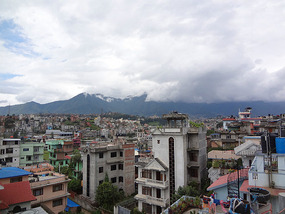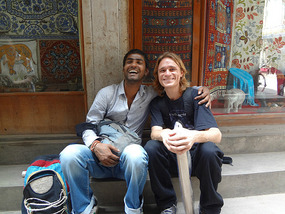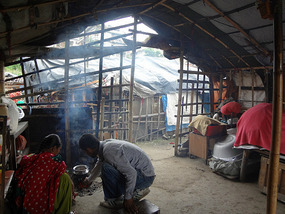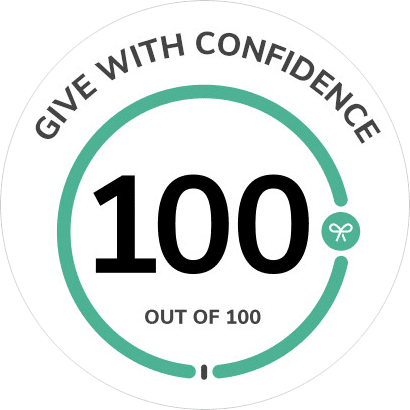The following is an excerpt taken from a blog entry by United Planet volunteer, Richard Vaughn, who is currently on a Long Term Quest in Nepal. Richard is working on a project that helps orphan and financially disadvantaged children by offering free education, food and shelter. He is volunteering on the project for an entire year, and expects to have even more to say in the following months! In the meantime, read one of his latest entries which describes his first couple of days in Nepal.
 Sufjan took me to the hostel in Kalanki where I will be staying for two weeks while I learn the basics of the Nepali language and customs. By the time we arrived here, I was totally awake and invigorated, despite (or perhaps as a result of) my extreme state of sleep deprivation. I took a much needed shower, met some of the other volunteers I will be training with, and within a few hours I was on a bus with several of them on the way to Bhaktapur, a famous ancient city commonly known as Khwopa in the local Newari tongue. This humongous gated city dates all the way back to the early 8th century. It is shaped like a flying pigeon spread out over almost 7 sq. km, lying at 1,400 meters above sea level. The city is home to nearly 100,000 peasants, merchants, businessmen, public employees and visitors. There are multiple sections in this town, such as the Durbar Square, which boasts a variety of stone and metal art, wood carvings, terracotta and many pieces of ancient architecture. The Taumadhi Square features multi-roofed buildings of Hindu and Buddhist worship, such as the Nyatapola, Bhairabnath and Tilmadhav temples. At the pottery Square you can watch potters working with their traditional wooden wheels, and in the Dattatraya Square you can visit an open museum which features wood, bronze and brass carvings. This city is indescribably large, and of course I ended up getting separated from my group. I spent two hours wandering the streets alone, marveling at the vast array of storefronts, occasionally stopping to realize my predicament. I was completely alone in this huge city on my first day in a third-world country half-way around the world. I was an hour away from the hostel and I didn’t know the address, the name of the city, or even the contact information for my hosts. I didn’t have a phone or Internet access anyway, so it wouldn’t have even mattered.
Sufjan took me to the hostel in Kalanki where I will be staying for two weeks while I learn the basics of the Nepali language and customs. By the time we arrived here, I was totally awake and invigorated, despite (or perhaps as a result of) my extreme state of sleep deprivation. I took a much needed shower, met some of the other volunteers I will be training with, and within a few hours I was on a bus with several of them on the way to Bhaktapur, a famous ancient city commonly known as Khwopa in the local Newari tongue. This humongous gated city dates all the way back to the early 8th century. It is shaped like a flying pigeon spread out over almost 7 sq. km, lying at 1,400 meters above sea level. The city is home to nearly 100,000 peasants, merchants, businessmen, public employees and visitors. There are multiple sections in this town, such as the Durbar Square, which boasts a variety of stone and metal art, wood carvings, terracotta and many pieces of ancient architecture. The Taumadhi Square features multi-roofed buildings of Hindu and Buddhist worship, such as the Nyatapola, Bhairabnath and Tilmadhav temples. At the pottery Square you can watch potters working with their traditional wooden wheels, and in the Dattatraya Square you can visit an open museum which features wood, bronze and brass carvings. This city is indescribably large, and of course I ended up getting separated from my group. I spent two hours wandering the streets alone, marveling at the vast array of storefronts, occasionally stopping to realize my predicament. I was completely alone in this huge city on my first day in a third-world country half-way around the world. I was an hour away from the hostel and I didn’t know the address, the name of the city, or even the contact information for my hosts. I didn’t have a phone or Internet access anyway, so it wouldn’t have even mattered.

Kathmandu Skyline
For the first half-hour, I became increasingly uneasy as the sun started to set and by the time I realized that I was highly unlikely to find the rest of my group, I knew that I needed to formulate some kind of plan if I was ever going to find my way back to the hostel. I had no choice but to expose my vulnerability to strangers, asking the most ridiculous questions about my location and even going as far as showing random people pictures of the hostel I had taken earlier in the day, asking if they could identify the location so I would know what bus I needed to get on. I was scared, but as I began opening up to the locals and discussing my situation with them, it became very clear to me that there is a fundamental difference between the people in Nepal and the people in the United States. When I was living in Baltimore, I KNEW from experience that I had to constantly watch my back or else get taken advantage of by strangers on the street. I had learned, through a decade of surviving in Maryland, to keep my guard up. To not ever trust anyone. To be terrified of my fellow man by necessity. But in those vulnerable moments in Bhaktapur, all the people that I encountered shattered these cynical notions of humanity that I had created over the years. Nepali people are simply the most generous, good-natured and humbly respectful people I’ve ever known. Nobody tried to harm me or steal from me. I wouldn’t say that I really got much assistance from anyone in terms of my predicament, but everybody I stopped to speak with was genuinely interested in who I was, where I was from, what my life experiences had been, and what my philosophies were. I would later learn that if you are in Nepal, you are family to anyone and everyone, and they will treat you as such. I eventually located a few of the people from my group, and we all took a bus back to Kalanki. I crashed into a state of deep, blissful slumber that first night in Asia, and I had learned a very valuable lesson about the nature of humanity. I woke up the next morning madly in love with Nepal.
After breakfast the following day, four of us newly-acquainted volunteers decided to take a taxi to go shopping in Thamel. In our group was Elise, a girl from Oregon I had met in New Hampshire at the pre-departure training, Mikael, a volunteer from Finland, and Akane, a girl from Japan. We arrived in Thamel after the typical terrifying high-speed car ride that I had already come to love. After an hour or so of shopping around, the girls were approached by a merchant who was offering to decorate their hands with Henna paint, so we all sat down in an empty alleyway and started chatting. A few minutes later we met Suresh, a shoe-shiner by trade who was very talkative and eager to get to know us all. He mentioned that he knew the city quite well and offered to show us around, so when the girls were finished getting decorated with Henna designs, we all got up and followed him. Instead of being paranoid and suspicious of our fellow man, we just went with it and decided to put our faith and trust in him, which definitely paid off. He showed us a few stores where I was able to purchase some Nepali music, and an excellent coffee shop where I ate the most amazing yak-cheese club sandwiches in existence. We spent a few hours chatting it up with Suresh there, and then he asked us if we had ever been on a micro-bus before. None of us even knew what a micro-bus was, so he took us several blocks down the street from Thamel, and when one of the small, dented-up buses passed by, he told us that we should all get in, so without a second thought, we did. We were all so caught up in the experience that we didn’t stop to consider what kind of danger we may have been putting ourselves in by trusting a total stranger to lead us to a location that we knew nothing about, in a bus that was filled to capacity about three or four times over. In Nepal, there is no such thing as “no room on the bus”. They will stop and pick up new passengers and pack them in like sardines. The micro-bus packing procedure is as follows: there is a driver and a high-strung guy who hangs out the window of a sliding door, screaming the destination of the bus to anyone standing in the street. If said person indicates their willingness to ride, then the bus comes to a screeching stop, the screaming guy slides the doors open, takes the new passenger(s) by the hand and pushes them into the bus, which begins moving before anyone is situated. Then the high-speed chaos starts up again. You will have close, intimate physical contact with everyone around you by necessity. It is something that I imagine would be very hard to get used to, especially for someone like me, who typically avoids contact with people at all costs.

Me and Suresh
The five of us rode the bus several dozen miles until Suresh indicated through the mess of contorted passengers that it was time for us to get off. As it turns out, he had taken us to Boudhanath, a world heritage site and important place of pilgrimage for the practicing Buddhist. Boudhanath is home to the Great Stupa, one of the largest and most significant Buddhist monuments in the world. It towers above a small Tamang village made up of Tibetan refugees. Surrounding the Stupa are a number of storefronts selling various Buddhist-related items, such as monk-created paintings and handicrafts. Suresh showed us around the area, which he was obviously familiar with. After shopping around and interacting with the businessmen and locals there, we visited a Tibetan monastery that housed children who were preparing for monk-hood. Our group of five took an impromptu tour of the facility, where we watched a few dozen kids being taught by a monk how to pick mangoes from a very tall tree. He had split the apex of a large bamboo shoot into four equal corners and hoisted it up to the ripe fruit, capturing the prize inside and twisting the shoot until the mango detached from the tree. All the children were screaming happily and running in frenzied circles around the monk as the fruit fell down, which they scrambled to gather up. It was a site that was so precious our group just stood there gazing, not a one of us thinking for a moment that it would be acceptable to get our cameras out to snap a picture. We sat down after that and spent a while staring at the gorgeous architecture of the monastery, watching the gentle Buddhists quietly living their lives. Some were painting on canvass, some were meditating – some were even chatting on cell phones. Our group spent quite a while sitting on the steps surrounding the monastery, quietly observing. I have never in my life felt the kind of reverence that permeated this place. It was a sacred energy that I’m certain does not exist in very many places in the world. This is what spirituality is supposed to be about. These people have given up a life of material possessions, marriage, excess, wealth and sex, among other things, in order to devote themselves entirely in mind, body and spirit to their religion. This kind of absolute devotion seems rather like painful sacrifice superficially, but in their abstinence they are free from the chains that keep most folks bound to a life of servitude to materialism. With complete and total physical sacrifice, they are truly free from bondage.

Suresh’s Village
Towards the end of the day we reluctantly told Suresh that it was time for us to part ways. Suresh, however, insisted that we go with him to his home to meet his wife and children. Because he had been so kind and generous in showing us a side of Nepal that we would otherwise have never been exposed to, we agreed and followed him on foot a few miles to his village. What we saw there was something that I will never forget. His village was made up of houses built from bamboo shoots and pieces of wood tied with rope. Plastic tarps covered the tops of the structures, some of them held down by rocks and pieces of metal. These were homes built by their residents, each one as small as a walk-in closet, fitted with a few beds, a fire-pit and some makeshift shelving. As we walked through the entryway of this village, a group of curious children followed us to Suresh’s house, excitedly addressing us with the now-familiar Nepali greeting “Namaste”. Suresh showed us into his home, which had two walls and virtually no protection from the elements. His wife was squatting down over a fire-pit, toiling over a kettle of boiling water. Suresh requested that we all remove our shoes and sit down on one of the beds, and we complied. A few minutes later, his wife brought over a wooden tray with four cups of ginger tea. Suresh went out into the village to locate his two children, who he brought back to meet us. He had a son and a daughter, probably five and four years of age respectively. We sat there with his family, sipping tea and talking with them about life in their village. About a half-hour later Suresh offered to show us around, so we all got up and went to explore. Every single one of us left all of our things there in his hut. Our backpacks, our phones, and the items we had purchased during the day. There was absolutely no sense of suspicion toward any of the Nepali people we had encountered thus far, and we did not consider for even a moment that our things would be in jeopardy (and they weren’t). We spent quite a while roaming through the village, playing with the children there, and interacting with the locals. It was an hour of my life that I wouldn’t trade for a thousand extra years. In America we are so used to the basic amenities, such as fresh water, electricity, and clean living quarters that we have truly lost the ability to see life for what it actually is. Despite the harsh living conditions of this Nepali village, the inhabitants there are obviously a tight-knit community of genuinely happy people who work very hard to maintain their health and vitality despite very meager supplies and tools. But in America, where we have access to the biggest and best of virtually anything and everything, there is a sense of disconnection and alienation from each other as we obsessively struggle to maintain a sense of individual independence as opposed to interdependence. Here in Suresh’s village, they have very very little, but in that material vulnerability they are connected to one another in a way that few people in America could even imagine. Spending that day together with them made me realize that poverty is only a matter of perception. In America, we are living in an extreme state of impoverished intimacy while we clutch onto our “things” as representations of our individuality. In Suresh’s village, they are materially impoverished but have no concept of individuality; they are a large family, each one wholly reliant on the group as a means of emotional and physical survival. Their clothes are tattered and their bodies malnourished and unwashed, but they are happy, smiling, singing, dancing, laughing, and bursting at the seams with real, actual joy. The kind that, unlike the “things” we Americans desperately cradle as life itself, cannot ever be taken from them. Pure immutable happiness. There are not words to describe it, and I doubt there ever could be.
Before we left the village, we decided amongst ourselves that it would be appropriate to pay Suresh for his services as an unofficial tour guide, but he refused our money so we took him to a grocery store close by and bought him and his family several bags of food. He was extremely grateful, and we probably spent a half-hour saying goodbye, all of us crying because we were grateful for something.
 Suresh and his family grateful for the food, our group grateful for the most incredible and eye-opening experience of our lives. In that simple exchange lived the essence and soul of what it meant to be a human at that very moment in time. It was necessarily unspeakable, but it will surely live on in every one of us forever.There are not words to describe it, and there never should be. And that was only my first two days in Nepal.
Suresh and his family grateful for the food, our group grateful for the most incredible and eye-opening experience of our lives. In that simple exchange lived the essence and soul of what it meant to be a human at that very moment in time. It was necessarily unspeakable, but it will surely live on in every one of us forever.There are not words to describe it, and there never should be. And that was only my first two days in Nepal.
Thank you Richard for sharing this inspiring story with us! Your vivid descriptions and renditions of events truly put us in the moment. We look forward to hearing more, and will post updates as they come!
ABOUT UNITED PLANET
United Planet is a non-profit organization with a mission to create a global community, one relationship at a time. Established in 2001, United Planet offers volunteer abroad, virtual internships, internships abroad, gap year volunteering, and global virtual exchange in more than 40 countries.




